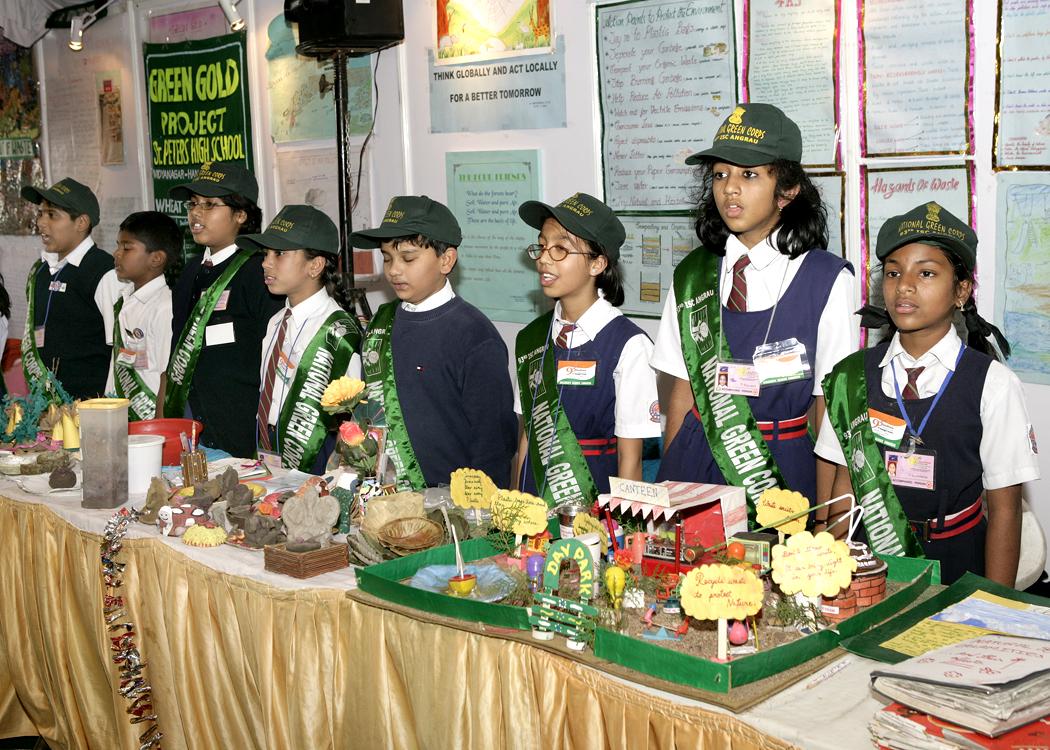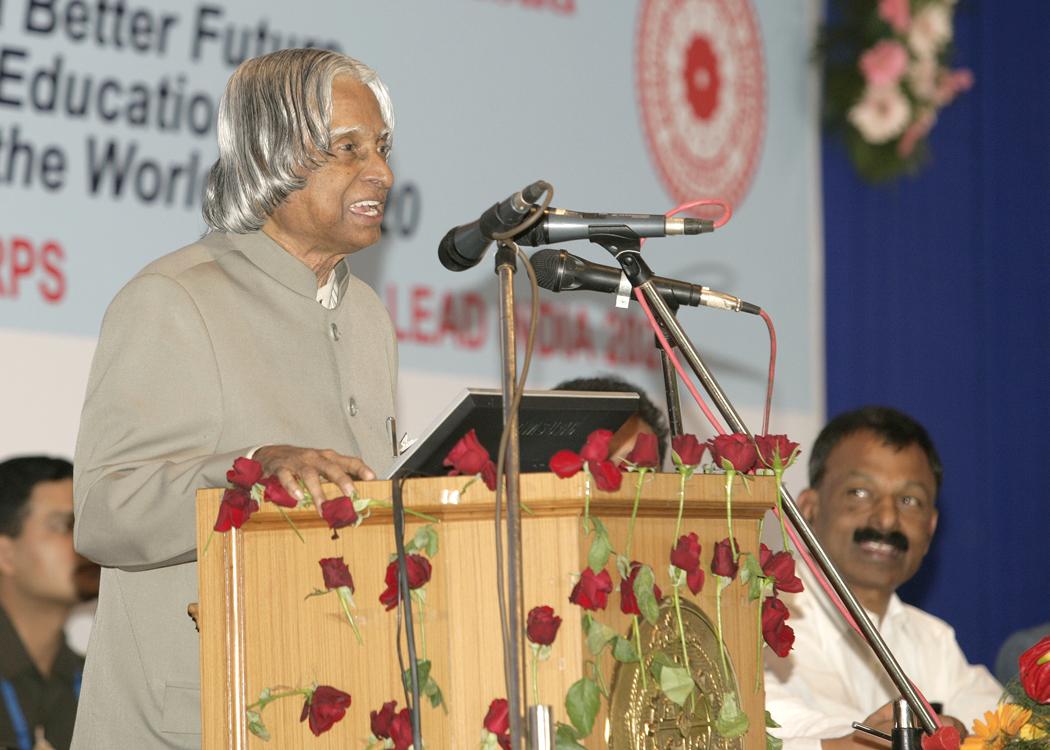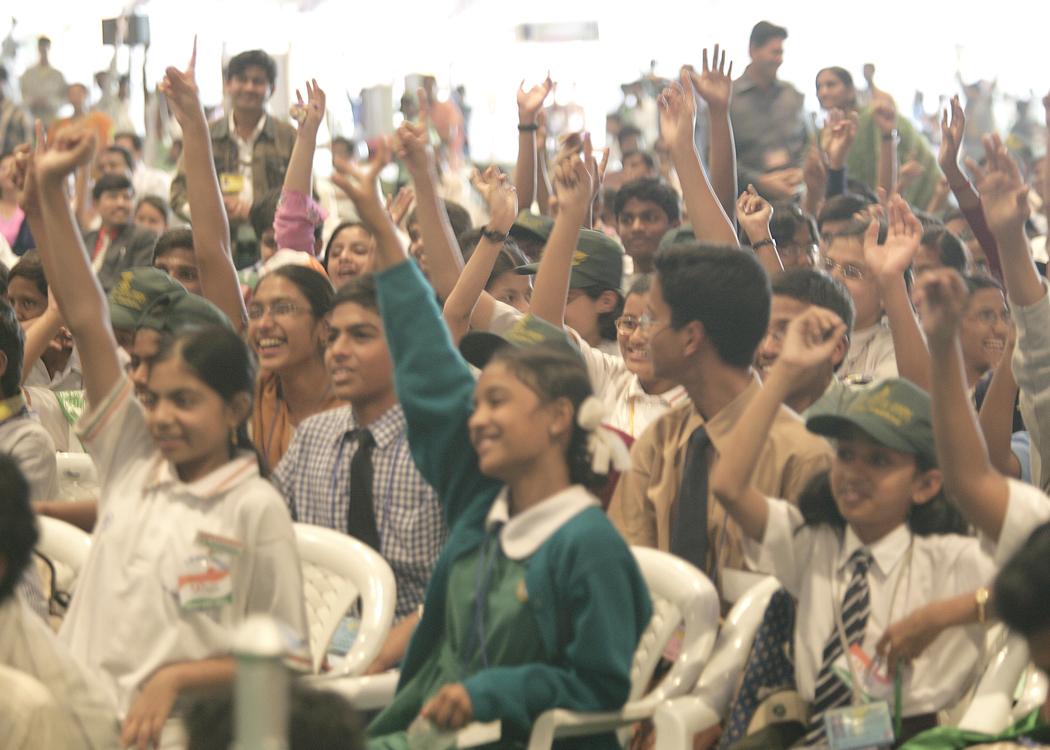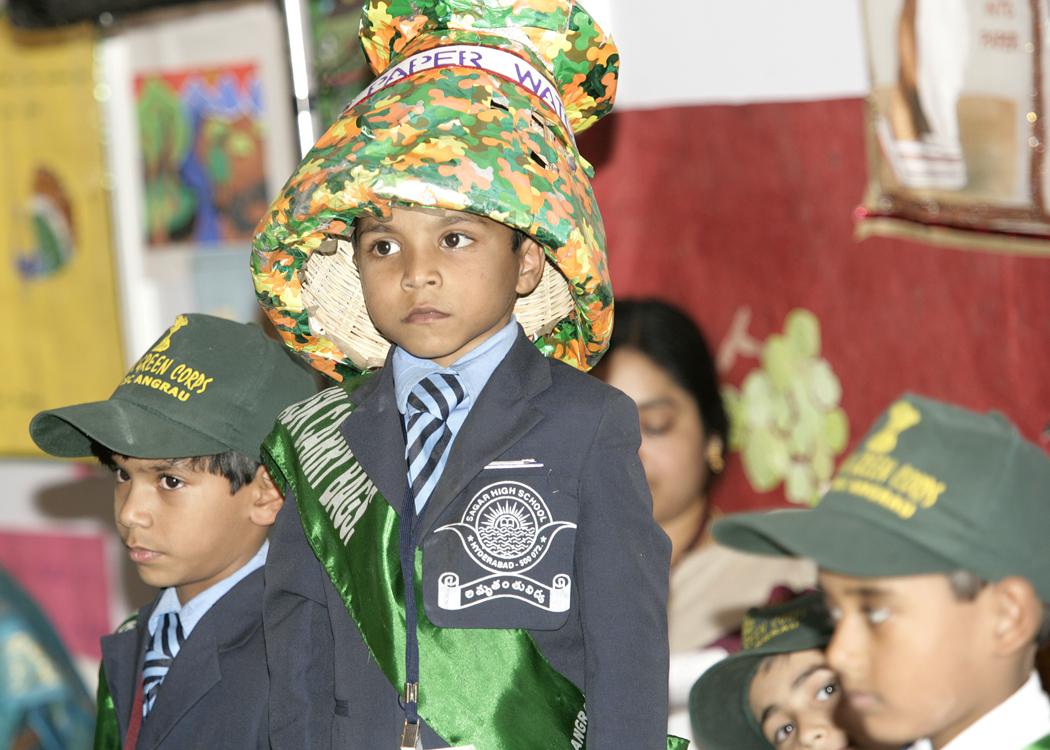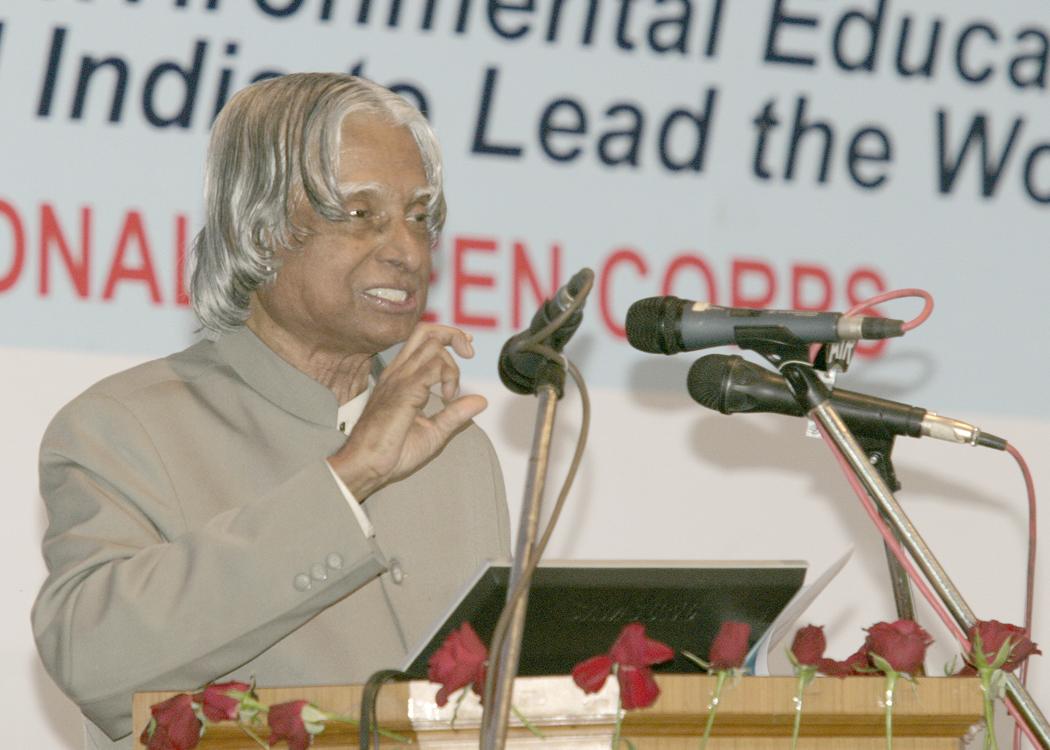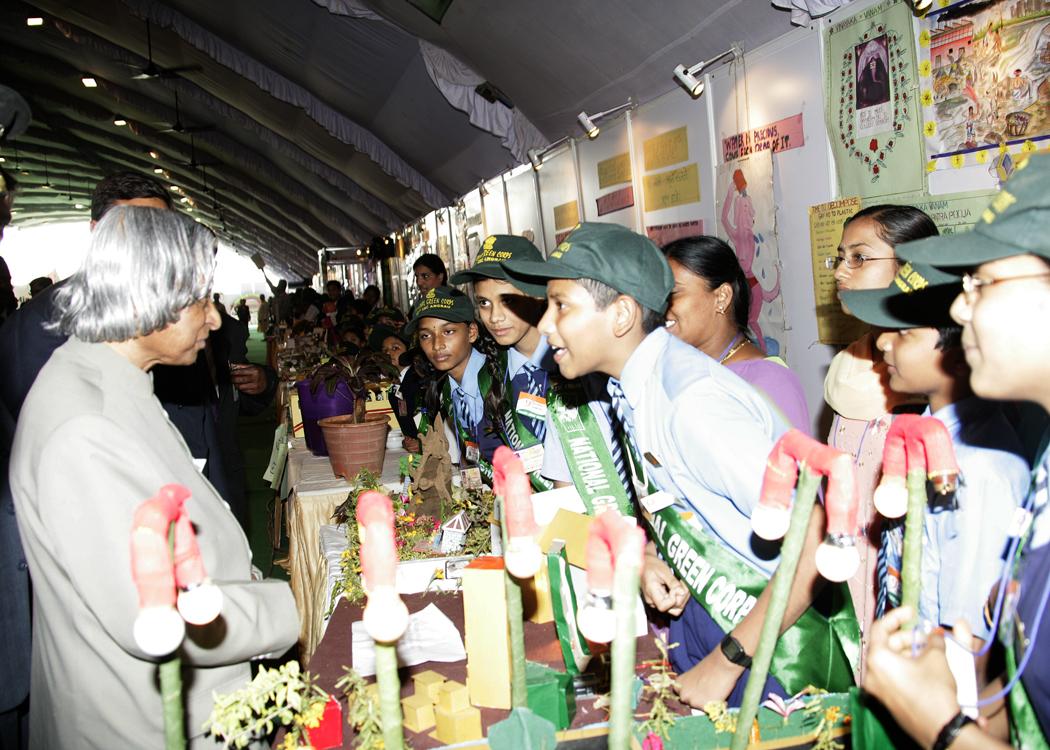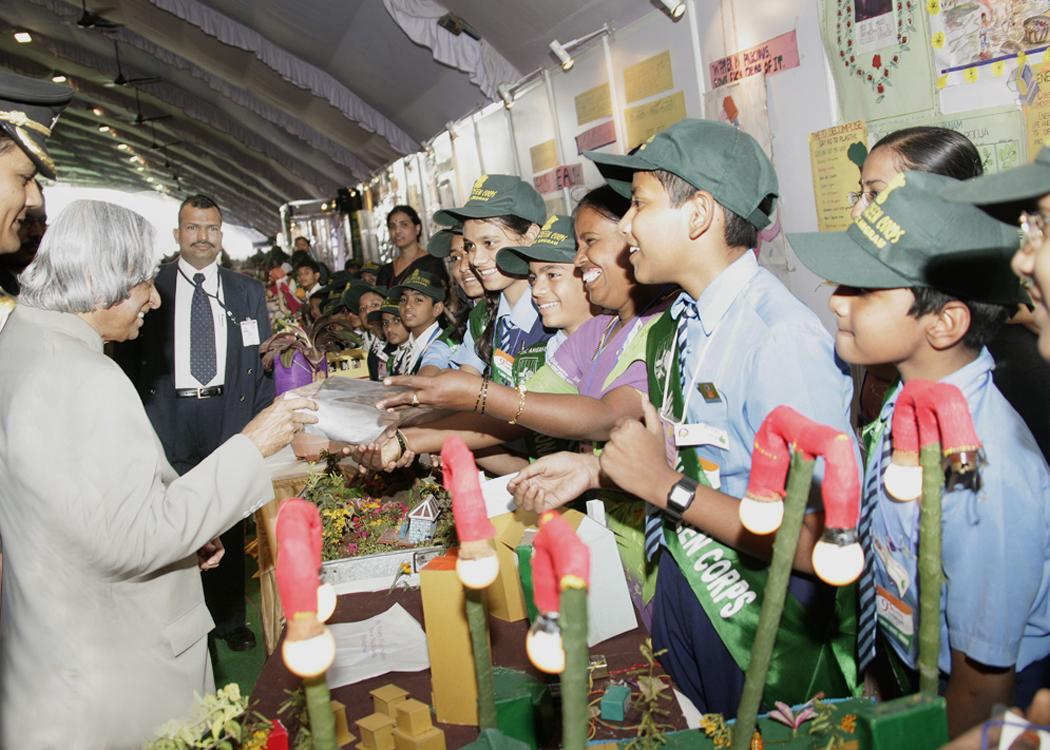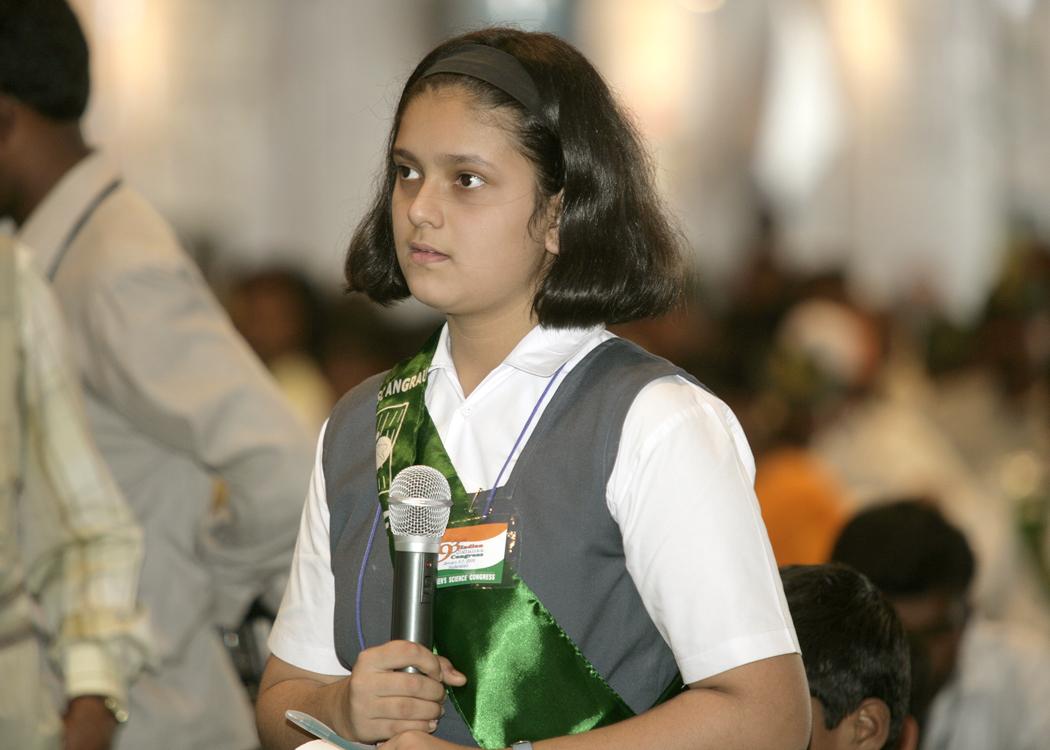Address At The Children's Science Congress, Hyderabad
Hyderabad : 05-01-2006
Science is a Lifetime mission
"Thinking provides knowledge
Knowledge makes you great"
I am indeed delighted to address the Children's Science Congress organized as part of 93rd Indian Science Congress. My greetings to the organizers, students, teachers and science planners participating in this Congress. I would like to share some important events in the life of two scientists which can enrich the work of aspiring students in their pursuit of science as a life time mission.
Father of Green revolution for multi-nations
First I would like to tell you about Dr. Norman Ernest Borlaug, a Nobel Laureate and the father of the Green Revolution in many parts of the world. He also participated in the India's Green revelution with our scientists and farmers. From age seven to nineteen, Borlaug worked on 100 acres family farm. He attended the one-teacher, one-room school in 1920 in New Oregon in Howard County and studied upto eighth grade. He left the farm and decided to study further on the advice of his grandfather. Initially, Borlaug could not succeed in the entrance exam, but was accepted to the school's newly created two-year General College. After two quarters, he went to the College of Agriculture's forestry program. While at the University of Minnesota, he was a member of the University wrestling team which taught him some valuable lessons to hold on against the best in the world. It made him tough. To finance his studies, Borlaug periodically had to put his education on hold and take a job. While working in one of the part time jobs in 1935, as a leader in the Civilian Conservation Corps, he had seen starvation and it left scars on him. At the end of his undergraduate education, Borlaug attended a lecture by Elvin Charles Stakman who described about the little enemies that destroyed our food crops. This lecture finally made Dr. Borlaug to study plant pathology and decided his future life and work towards removal of hunger from the world. He has also collaborated with scientists from India and other parts of the world, for adapting the new wheat to new lands and in gaining acceptance for their production. A pragmatic, goal-oriented scientist, he accepts and discards methods or results in a constant search for more fruitful and effective ones, while at the same time avoiding the pursuit of what he calls "academic butterflies". The life of Dr Norman Bourlaug is full of events and provides us with a message on importance of continuous Knowledge acquisition and indomitable spirit to face the challenges and succeed. Dear young friends, do you know that Dr.Norman Borlaug, got his Nobel Prize for peace, since as you all know poverty removal leads to peace. Let me share with you a trait of scientific magnanimity. You must adopt this trait when you grow and become great scientist. You must acquire this characteristics.
Scientific Magnanimity
In this connection, I would like to narrate an incident which took place during a function conferring Nobel Laureate Prof. Norman E Borlaug, with Dr. M S Swaminathan Award, at Vigyan Bhavan, New Delhi on the 15th of March 2005. Prof. Borlaug, at the age of 91, was in the midst of all the praise showered on him from everybody gathered there. When his turn came, he got up and highlighted India?s advancement in the agricultural science and production and said that the political visionary Shri C. Subramaniam and Dr. M S Swaminathan were the prime architects of First Green Revolution in India. He also recalled with pride, Dr. Verghese Kurien who ushered White Revolution in India. Then the surprise came. He turned to scientists sitting in the third row, fifth row and eighth row of the audience. He identified Dr. Raja Ram, a wheat specialist, Dr S K Vasal, a maize specialist, Dr. B. R. Barwale, a seed specialist. He said, all these scientists had contributed for India?s and Asia?s agricultural science. Dr. Borlaug introduced them to the audience by asking them to stand and ensured that the audience cheered and greeted the scientists with great enthusiasm. This scene I have not witnessed in our country before. This action of Dr. Norman Borlaug, I call it as a Scientific Magnanimity. Friends, if you aspire to achieve great things in life, you need Scientific Magnanimity. It is my experience that great mind and great heart go together. This Scientific Magnanimity will motivate the scientific community and nurture team spirit.
A genius ahead of time
Next I would like to talk about the great mathematician Ramanujan's life. Ramanujan was born in 1887 in Tamil Nadu and at the age of 10, he entered the Town High School in Kumbakonam, where he first encountered formal mathematics. At 11 he had mastered the mathematical knowledge of advanced trigonometry using loaned books. His genius was beginning at the age of 14. Not only did he achieve merit certificates and academic awards throughout his school years, he was assisting the school in the logistics of assigning its 1200 students (each with their own needs) to its 35-odd teachers, completing exams in half the allotted time. His peers at the time later commented "We, including teachers, rarely understood him," and "stood in respectful awe" of him. However, Ramanujan could not concentrate on other subjects and failed his high school exams.
His in-exhaustible spirit and love for his subject made him contribute to the treasure houses of mathematical research ? some of which are still under serious study and engaging all-available world mathematicians? efforts to establish formal proofs. Ramanujan was a unique Indian genius who could melt the heart of the most hardened and outstanding Cambridge mathematician Prof G H Hardy. In fact, it is not an exaggeration to say that it was Prof. Hardy who discovered Ramanujan for the world. Professor Hardy rated various geniuses on a scale of 100. While most of the mathematicians got a rating of around 30 with rare exceptions reaching to 60, Ramanujan got a rating of 100. Friends, the genius in Ramanujan had to be discovered by Prof. Hardy.
One of the tributes to Ramanujan says that, ?every Integer is a personal friend of Ramanujan?. For Ramanujan, numbers and their mathematical relationship were the measure of how the universe fits together. Each new theorem he explored was one more piece of the infinite to fathom.
In the area of analogue signal processing one uses a mathematical technique called Fourier Transform. When one enters the digital world a different tool called Discrete Fourier Transform is used. Whereas, if one has to analyse noise signals, engineers have recently come to the conclusion that an efficient mathematical tool would be the Ramanujan Fourier Transformation or in short RFT . This once again demonstrates that though Ramanujan did the work on RFT purely to satisfy his urge to explore the beauty of mathematics, it had come to be of use in day-to-applications like communications- almost six decades later. Ramanujan's work on number theory is a pioneering contribution to mathematical science.
So far I was discussing about lives of two great scientists, who can be your role models. Now I would like to highlight one event that presents the richness of the imagination of a 13 year old student in our country, who is like one amongst you.
Planetary life - 3000 AD
On 22 March 2005, I participated in the award ceremony of Shankar?s International Children?s Competition at New Delhi. There I found the visualization of a 13 year old girl named Aardhra Krishna on how the earth?s civilization will look like around 3000 AD. In her imagination, the citizens are forced to migrate to Mars and have made Mars the home to a flourishing civilization. This advanced civilization, which was man made, comes suddenly under threat created by nature in the form of an asteroid of Jupiter. The asteroid from Jupiter orbit was coming towards Mars and Mars was in danger of extinction. The scientists on Mars come up with a very innovative plan of a barrage of nuclear cannons to attack the oncoming asteroid. The bombardment destroys the asteroid and the year 3000 sees a Martian civilization surviving from the fury of the nature by an innovative scientific application. What a wonderful thinking of a young girl !. Dear students, I am sure your minds are equally powerful in visualising and thinking. Let me share with you an event which actully took place in July 2005 through a NASA Space experiment.
Deep Impact on Comet Tempel-I
This event relates to the impact of the NASA spacecraft called deep impact smashing into the comet Tempel-I, with enough force to create football stadium sized crater with a depth of a 14 storey building. The spacecraft was navigated by an Indian Shyam Bhaskaran ? the deep impact traveled 431 million kms in 172 days escaping from the earth orbit and intercepted the comet at a straight distance from earth at 134 million km. the comet was orbiting around the Sun every five and half years. This is considered as one of the land marks in space exploration.
This event is important to divert asteroids which may hit the earth in future. One such large asteroid 1950 AD is expected to hit the earth on March 16, 2880 AD and nearly one third of the earth will be damaged. Like the ?Deep Impact? one spacecraft is required to be sent with high energy material to divert or break the asteroid to move it out of the present orbit.
Now I would like to share with you two interesting questions, which the students asked me, during the National Children's Science Congress on the 27th Dec.2005 at Bhubaneswar.
Subyani Nayak, Narayani Girls High School
1. How can we store the sound energy? What is the mathematical equation of Brownian movement of Albert Einstein?
Ans: We cannot store sound energy as sound immediately disperses in the atmosphere. Einstein's first major achievement concerned Brownian movement, the random movement of fine particles that can be seen through a microscope, which was first observed in 1827 by Robert Brown when studying a suspension of pollen grains in water. The motion of the pollen grains increased when the temperature increased but decreased if larger particles were used. Einstein explained this phenomenon as being the effect of large numbers of molecules (in this case, water molecules) bombarding the particles.
2. If you start digging at one point of earth and continue digging where will you reach?
Ans: People believed the earth to be a solid mass thoroughly whereas some believe it to be having a top layer consisting of solid for hundreds of kilometer and remaining, a molten mass. The deepest hole drilled is about 7.5 km down and the deepest mine into which man has traveled is 3.5km down (A gold mine in BixBurg, the Transvaal, South Africa). The earth?s radius is 6,400 km. We don?t really have the deep level digging equipment that could cover even a reasonable part of this number.
It was in the 18th Century that there emerged a concept in the minds of two mathematicians. (Maupertuis and the philosopher Voltaire). They dreamed of tunneling right through earth. Of course, no tunnel of this nature has been dug yet, however let us consider for science?s sake that this tunnel has been dug. What will happen when one falls down in this ?bottomless pit?? Assume that the drag present due to air is absent. You will never ever crash into the bottom yet you experience the thrill of falling!! There is no bottom in this pit. You keep falling and falling until you reach the velocity produced by gravity i.e. appx. 8 km/sec until you reach the center of the earth and then you feel a change of sensation. Now instead of falling down, you feel as you are being thrown up (like on a fireman?s blanket) You simply overshoot and continue to fall or rather shoot ?up? from the earth?s center and gradually your speed decreases, until you reach the opposite end. Now you must have something to hold on tightly for your life or you will start going down once again. This process can continue continuously like a pendulum considering that we have neglected the air drag in this case. If you consider the air drag, you will slow down gradually and eventually stop at the center of the earth. Friends, similarly I have so far answered more than 1500 questions from science to various fields, you can see the children's corner of my website: http:// . End of my talk, I will take up few of your questions.
Conclusion
I would like to share with you a information. The Government has approved the design and development of a Youth Satellite and its launching in collaboration with Russia. Later, this facility will be made available to other countries as well. The satellite will be built by the Universities in collaboration with Indian Space Research Organization. Youth satellite will be a communication medium among the youth of the world. The Satellite can be used by the youth to promote peace in the world, and above all creation of enlightened citizens. Some of the research experiments can be suggested by the student community. The students assembled here can think of various projects which they would like to do using the Youth Satellite.
In Conclusion, I have three suggestions for the aspiring young scientists. In the field of science, discoveries and inventions can be realized only after going through challenging problems. Courage is very vital. You have to prepare yourself, with knowledge, for this mission. I would recommend five books for you to read. You can buy if you can afford or your school/college library should acquire. Thirdly I would like you to design a mission statement for your life. That will put you in the higher plane of mind. Let me explain to you the three suggestions.
1. Courage
Dear friends, will you take a oath with me on Courage.
COURAGE
Courage to think different,
Courage to invent,
Courage to discover the impossible,
Courage to combat the problems and Succeed
are the unique qualities of the youth.
As a youth of my nation, I will work and work with
courage to achieve success in scientific discoveries.
2. Books as your friends
I would request all of you to read the following five books during the year 2006 in addition to your course material.
a. Empires of the Mind : Lessons To Lead And Succeed In A Knowledge-Based by Denis Waitley
b. Journey into Light: Life and Science of C.V. Raman by G. Venkataraman
c. A Brief History of Time : From the Big Bang to Black Holes by Stephen W. Hawking, Ron Miller, Carl Sagan, Stephen Hawking
d. Parallel Worlds: A Journey Through Creation, Higher Dimensions, and the Future of the Cosmos by Michio Kaku "
e. The Best of Indian Physics: (Contemporary Fundamental Physics) Edited by B.G.Sidharth.
3. A mission Statement
Dear friends, may I request all of you to take a page, think and write about your own life statement ?What I will be remembered for?? You can send your answer to my e-mail ID: presidentofindia@rb.nic.in. The best life statements will get a beautiful gift from me.
My greetings to all the participants of Children's Science Congress and I wish you all success in your scientific pursuit as a life time mission.
May God bless you.
Question and Answer Session
I. Sushanthi, VII Class, Narayana Concept School, Hyderabad
1. As Children, we are very much ashamed that our Hon?ble elected representatives are resorting to take bribe for asking questions in Parliament. As Rashtrapathiji, what do you feel about such morally deteriorated public life? Is there any solution to arrest this trend in our country?
Ans: As you are aware, Parliament has already taken fast corrective action. However, as a long term measure I have always been suggesting that righteousness has to start at Home. Only three people can make the country corruption free. They are Father, Mother and the Elementary School Teacher. Also, the children can correct the parents if they deviate from the righteous path, through the tool of love and affection.
P. Ravi Raja, VII B, Kendriya Vidhyala, Kanchanbagh.
2. What are the consequences or effects if you make artificial rains? Is there any cycle change with this?
Ans:Technologically making artificial rain is possible. However, it is expensive. Also, conflicts can occur on the question cloud belongs to whom between States or even between countries. There is no possibility of cycle change since the rain water irrespective of the place has to get evaporated and form a closed loop cycle.
Tanvee Mahesh Thakur, VII Class, I.E.S?s Modern English School, Mumbai.
3. Mumbai city is in a need of very effective disaster management, especially after 26th July, 2005. Please throw some light on the measures adopted for the same by the Government of India.
Ans: There is a need to maintain the gradient in the Mithi river. Also, Government is in the process of revamping the drainage system of the city so that such difficulties do not arise in the future. They are ensuring availability of multiple parallel paths for rain water into the sea. Also, I suggested connecting small rivers and rivulets. We should study the possibility of creating underground water silos for storing flood water. This is applicable to all the coastal cities.
Anand Sinha, VII A Class, Kendriya Vidyalaya, CRPF
4. What do you think about science and its values? What did you aim, when you were a science student?
Ans: Science needs acquisition of knowledge and dedicated work. These two values have to be acquired by all scientists. Science does not teach moral values. It has to come from our Civilizational heritage, parents and good teachers.
K. Sharath, St. Josephs Convent School.
5. In the autobiography of Dr. A.P.J. Abdul Kalam, I have read that he had learnt about missiles, rockets, etc. in Vedas that belong to India. But why India is still a developing country?
Ans. What have been stated in the books are that our country has a history of possessing technology for making missiles and rockets. However, this is only one part of the development. For national development we need integrated action in five areas such as agriculture and agro food processing, education and healthcare, ICT, infrastructure including power and critical technologies.
Ms. Kinjal Sharma, 1 Class, International School
6. Why did you become a scientist?
Ans: I was motivated to become a scientist by my elementary school teacher Shri Sivasubramania Iyer.

